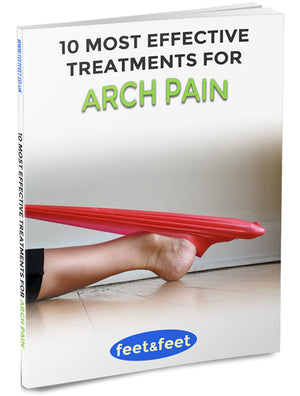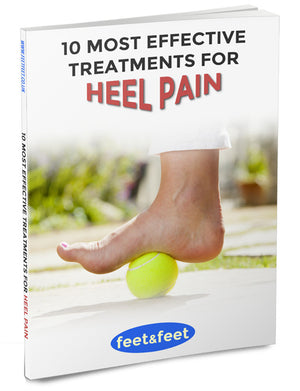Dr. Berg Reveals the Number One Vitamin to Eliminate Swollen Legs
Swollen legs and ankles - what many call edema - can be more than just an annoyance. While it’s often linked to liver, kidney or heart issues, sometimes the cause is surprisingly simple and much easier to fix than you’d imagine.
Dr. Eric Berg dives into the root cause of edema and shares a practical, effective solution that could bring you relief.
What Is Edema?
Edema is just a fancy term for swelling caused by fluid buildup in your body’s tissues. It’s especially noticeable in the legs and ankles and one telltale sign is "pitting edema." That’s when pressing the swollen area leaves a little dent behind.
So, what’s happening inside your body to cause this?
Dr. Berg uses the analogy – Imagine a broken pump in a flooded basement. Inside your body, sodium-potassium pumps in your cells regulate fluid movement. When they malfunction, fluid collects outside the cells, leading to swelling.
The Sugar Connection: Blood Sugar and Glycation
High blood sugar plays a sneaky role in triggering edema through something called glycation. This happens when sugar molecules latch onto proteins in your blood, basically wrecking their ability to work properly.
Dr. Berg puts it bluntly:
"When you eat sugar, you destroy your blood’s ability to carry nutrients and oxygen."
That means poor circulation, fluid buildup and, eventually, swelling in the lower body.
Sugar also disrupts your sodium-potassium balance. It traps potassium inside cells while making your body retain sodium. And since water follows sodium, you can guess what happens next - more swelling.
Over time, high sugar levels can even damage nerves, causing numbness or tingling, a condition known as peripheral neuropathy.
3 Nutrients to Help Kick Edema
Dr. Berg highlights three powerhouse nutrients—potassium, magnesium and vitamin B1 - that can help reduce swelling and restore balance.
Let’s break it down:
Potassium
Potassium is your body’s best friend when it comes to keeping swelling in check. It’s vital for those sodium-potassium pumps that regulate fluid movement.
Adults need a whopping 4,700 milligrams of potassium every day, but let’s face it, most of us don’t get anywhere near that from food alone.
Take bananas, for example. Sure, they’re famous for potassium, but one medium banana only has about 300 milligrams. To hit your daily target, you’d need to eat over 15 bananas - not exactly practical (or healthy, given the sugar).
Instead, Dr. Berg suggests reaching for low-sugar, nutrient-packed options like:
- Avocados: Packed with around 975 milligrams of potassium per fruit.
- Cooked Spinach: One cup delivers nearly 840 milligrams.
- Berries: Strawberries and blackberries give you a potassium boost without spiking blood sugar.
If food alone doesn’t cut it, try high-quality electrolyte powders - but watch out for sneaky added sugars!
These powders can quickly replenish potassium and give your cells the support they need to reduce swelling.
Magnesium
This essential mineral works hand-in-hand with potassium to keep your cells and muscles functioning smoothly.
Think of magnesium as the battery charger for your body’s sodium-potassium pumps - tiny mechanisms that regulate fluid levels in your cells. Without enough magnesium, these pumps slow down, leading to fluid imbalances and swelling.
But magnesium does more than just balance fluids. It helps relax your blood vessels, improving circulation and preventing fluids from pooling in your lower body.
Plus, it keeps those annoying muscle cramps at bay, which are all too common if you're retaining water.
So, how much magnesium do you need?
Most adults require about 420 milligrams daily. The good news? Getting enough is easier than it sounds.
Here’s where you can find it:
- Pumpkin seeds: One ounce packs a whopping 150 milligrams of magnesium. Snack on these for a crunchy, healthy boost.
- Leafy greens: A cup of cooked Swiss chard delivers another 150 milligrams. Collard greens are another excellent option.
- Almonds and sunflower seeds: Great for on-the-go munching while boosting your magnesium levels.
If you’re looking for a shortcut, high-quality electrolyte powders can also provide magnesium, but be picky. Look for ones without hidden sugars or additives—your body deserves the good stuff.
Vitamin B1: The Unsung Hero in Beating Edema
Swelling isn’t just about fluid - sometimes, it’s tied to how your body processes energy. That’s where vitamin B1 (thiamine) comes in. It helps your body turn carbs into fuel.
Without enough B1, sugar builds up in your bloodstream, leading to all kinds of trouble - poor circulation, fluid leaks and swelling in your legs and ankles.
Worse still, a diet heavy in refined carbs (like white bread, pastries and sugary drinks) drains your B1 reserves. It’s like pouring water into a leaky bucket - you’re always falling short. This sets off a vicious cycle: low B1 makes swelling worse and swelling can lead to nerve issues like peripheral neuropathy.
Here’s the good news - getting your B1 levels back on track is entirely doable. Stock up on these B1-rich foods:
- For meat lovers: Pork, fish and legumes are excellent sources.
- For vegetarians: Sunflower seeds and fortified cereals are great options.
- Supplements: If you’ve been indulging in too many sugary treats, a B1 supplement can help reboot your levels quickly.
When your body has enough B1, it can power the sodium-potassium pumps that keep your fluid levels balanced. That means less swelling and more energy - win-win.
A Few Lifestyle Tweaks for Long-Term Relief
Nutrient fixes are a great start, but lasting relief comes from looking at the bigger picture.
Dr. Berg points out that refined carbs and sugars are the main culprits behind recurring swelling. Cutting back - or cutting them out - can make a world of difference.
"As soon as you go back to eating refined carbohydrates, the swelling comes back" he warns.
So, swap out sugary drinks for water, trade white bread for whole grains and try snacks like nuts or seeds instead of pastries. Pair these changes with an electrolyte powder that’s free of hidden sugars or artificial fillers and you’ll not only feel better but see the difference too.
Conclusion
Swollen legs and ankles can feel like a frustrating mystery, but the solution is surprisingly straightforward. Magnesium, potassium and vitamin B1 are the real winners of fluid balance and incorporating them into your diet can help your body regain its natural rhythm.
Combine these nutrients with a diet low in sugar and refined carbs and you’ll not only reduce swelling but boost your overall health.
Are you ready to feel like yourself again?
Start small, stay consistent and watch the swelling melt away.



Comments
Leave a comment